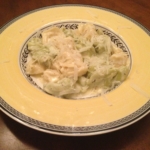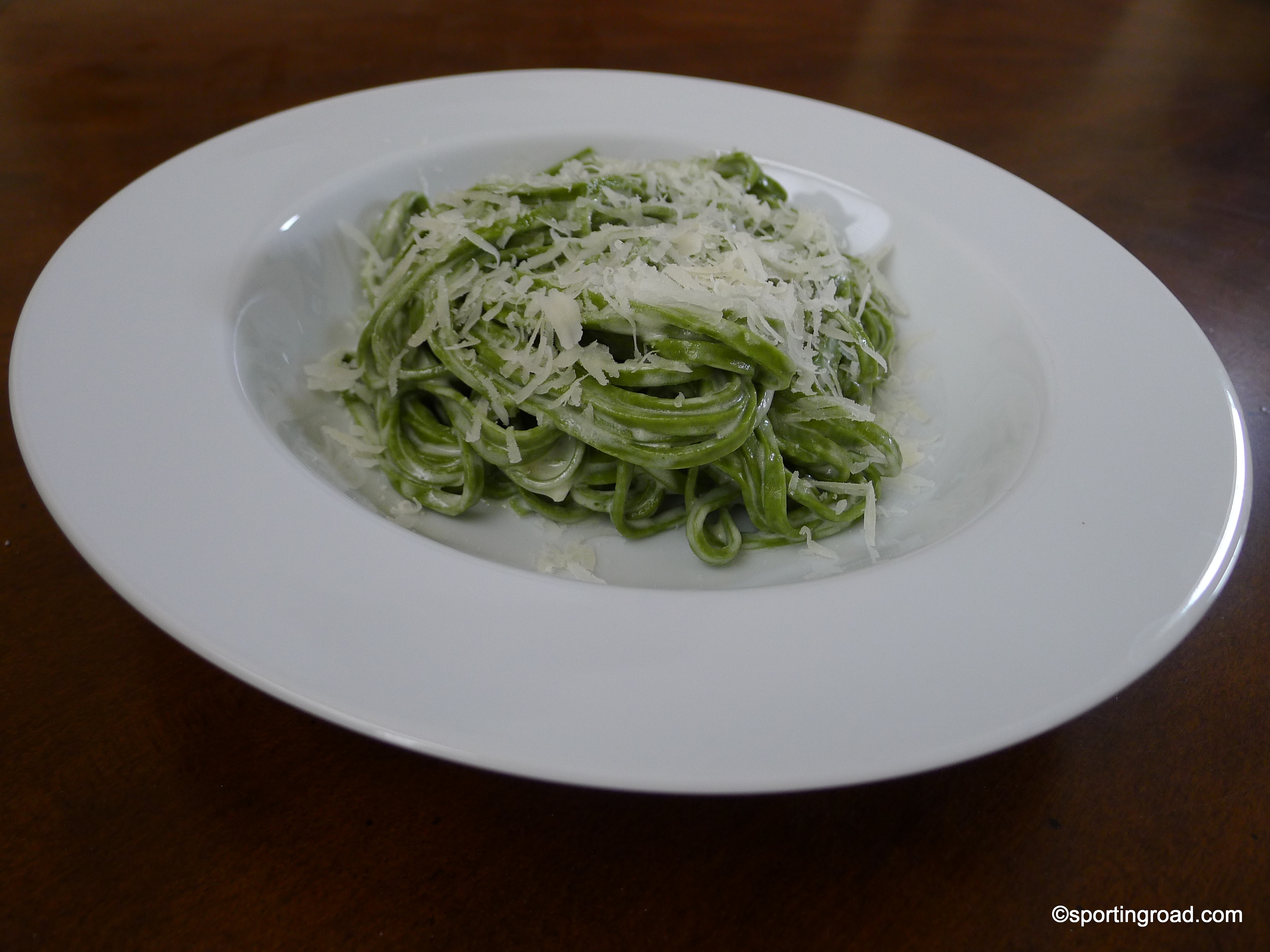Fettuccine Alfredo as served in Rome is simply fresh fettuccine, creamy butter, and fragrant Parmigiana Reggiano. In the US, fettuccine Alfredo is typically loaded with butter, heavy cream, garlic, cheese, and often includes chicken or shrimp as additional toppings.
Fettuccine Alfredo was popularized by chef Alfredo Di Lelio in the early 1900s, and his original recipe was quite simple, consisting only of pasta, butter, and non-aged Parmesan. When the dish arrived in America, chefs adapted it with available ingredients, often adding cream, which is why the American version differs from the original. For a more authentic experience, skip the heavy cream, chicken, and garlic. Instead, focus on using high-quality Parmesan, butter, and egg pasta.
- 1 lb. fresh fettuccine noodles cooked to instructions, usually about 2 minutes for al dente, or firm to the bite. We like fresh spinach noodles, which were my mother’s favorite for this recipe as well. Sometimes we substitute store bought tortellini.
Heat the following, which will not thicken:
- 1 c. heavy cream
- ½ lb. unsalted butter
- ½ c. Parmigiana Reggiano cheese
- Freshly ground black pepper
Beat 1 egg yolk in a bowl and add 1 c. of above heated mixture to temper. Then add together. Drain noodles. Return to heated pot and add sauce for 1 minute to temperature to coat noodles. Season with the freshly ground black pepper and top with a bit more cheese.
 AND FOR THE FRESH EGG PASTA, IF YOU WANT TO QUICKLY MAKE AT HOME INSTEAD OF BUYING STORE BOUGHT
AND FOR THE FRESH EGG PASTA, IF YOU WANT TO QUICKLY MAKE AT HOME INSTEAD OF BUYING STORE BOUGHT
From Fabio’s Italian Kitchen, Fabio Viviani, the best Italian cookbook for today’s times.
Ingredients:
10 egg yolks
Pinch of table salt
½ tsp. ground black pepper
2 tsp. olive oil
2 cups flour
TIP: Remember—even though I always ask for large eggs, egg sizes vary. If you see that after you put in the egg yolks, your pasta is sticky, add more flour, 1 tablespoon at a time.
I grew up with fresh egg pasta. The way my great-grandma kept me from destroying the household was to have me crack eight eggs on a cutting board and hand mix them with flour for hours. It’s a very time-consuming maneuver! I am all about preserving tradition, but what about improving the execution of tradition so you can have traditional flavor in a tenth of the time? That’s the way I teach people to make pasta. By following my way, anyone can make it. All you need is a food processor and a blade attachment.
- Place the egg yolks in a food processor with the blade attachment, add the salt, pepper, and olive oil, and pulse a few times.
- Add half of the flour and pulse until the eggs absorb it and you have a semi-thick paste. Add the rest of the flour and allow the blade to rotate continuously. When the dough is ready, you should see a ball-shaped mass of flour and eggs bouncing around the canister. If the dough is still too wet to the touch, add an extra tablespoon of flour. If it is a bit dry, add a little water as needed.
- Take the pasta out and roll/shape according to the directions of the recipe you are making. If you’re saving it for later, wrap it in plastic wrap and place it in the fridge for up to 6 days. (But pasta, according to my grandpa, must be consumed right away, or you should just make a risotto instead!)


Leave A Comment
You must be logged in to post a comment.